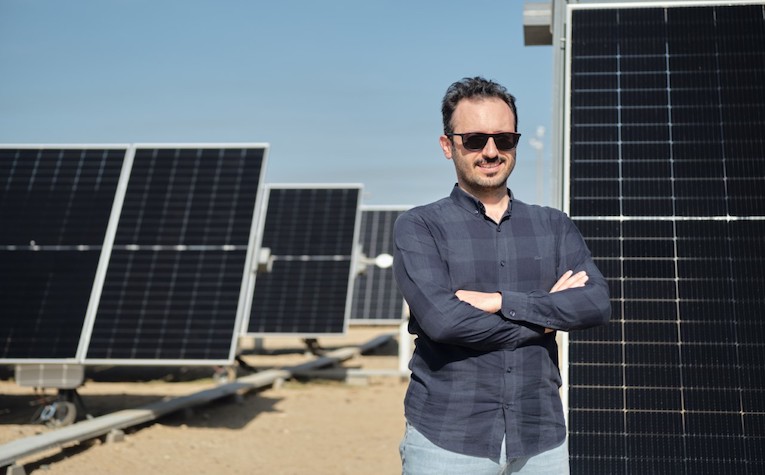
15 May, 2023
Anticipation of a paradigm shift in the space photovoltaics market, combined with expertise in advanced solar cell technology, launches a winning idea.
Rocket launches used to be reserved for relatively infrequent scientific expeditions into deep space. Recent privatization has ushered in a new era of space travel with sharply reduced transport costs that has led to a boom in demand for low-cost space-grade photovoltaic solar cells.
Foreseeing this upcoming paradigm shift in the sector, KAUST researcher Erkan Aydin is now scoping research around space-grade photovoltaics.
“My idea stemmed from a curiosity about how mega-satellite constellations could be powered if the number of satellites rises sharply. Until recently, the relatively small number of space missions have been powered by complex and expensive photovoltaics where budget is not an issue.”
“Constellation satellite projects proposed for broadband internet access include the launch of more than 100,000 satellites to low earth orbit in space (17 times today’s total) within the next decade,” says Aydin.
He says there is insufficient supply for the photovoltaics required and they are also unfeasible. “Although today’s best-performing space grade photovoltaics can deliver high power per unit weight, they are very expensive, and global manufacturing capacity will not meet demand.”
“In this new space era, photovoltaic requirements are changing from one of high cost/low demand to low cost/high demand, which is a paradigm shift,” says Aydin.
Since joining Stefaan De Wolf’s lab in the KAUST Solar Center, Aydin has played a leading role in developing the technology and demonstrating the ultra-high efficiency of perovskite-based tandem solar cells.

More recently, Aydin’s research has focused on the long-term operational stability and industrialization of tandem solar cells. “We have demonstrated their feasibility, but proving their long-term operational stability is the remaining roadblock to upscaling the technology,” he says.
He believes perovskite-tandem solar cells offer several advantages to meet the requirements of the new space era. They are extremely efficient, significantly cheaper than existing technologies and their fabrication can be conveniently scaled up with high-throughput techniques.
The critical challenge is stabilizing the cells in synergistic space extremes, such as high vacuum, high-particle radiation and high-temperature variations,” says Aydin. “Achieving this goal will lead to several explorations in the photovoltaic field and other optoelectronic device applications.”
Aydin credits KAUST Solar Center’s multidisciplinary working environment for changing the way he views scientific problems. “The expertise that I have developed over the past seven years sets me up perfectly for the challenge of this new project.”
The great facilities at KAUST have enabled me to conduct cutting-edge photovoltaic research. The hot and sunny climate of Saudi Arabia is a great place to observe how my solar cells behave in the real world and to prepare them to industry standard,” he says.
Read more at KAUST Insight.